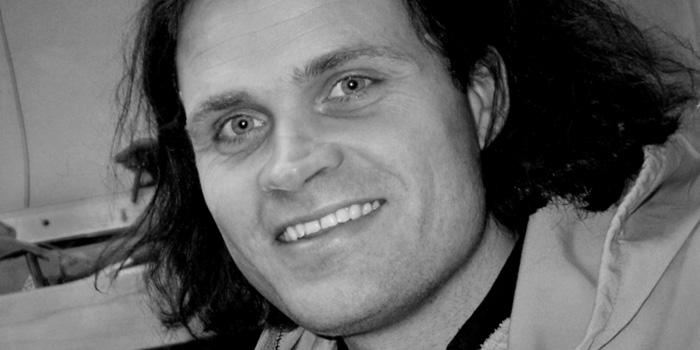
Other areas /
Google Ads
Johan Verde: Design to lift, angle, clean and storeIt’s typical of Norwegian designer Johan Verde to push the boundaries between form, materials and technology, and forge unexpected alliances between them. |
SUBSCRIBE SEND AS EMAIL |

|
|
|
Johan Verde
|
1 2 |
|
It’s a typical day in Johan Verde’s studio. He just flew back from Paris this morning, and is struggling to get his bench for Oslo’s flytåg terminal (rail to the airport) ready for production before jetting off to China tomorrow. No sooner had he opened the files on his computer than a call came through from Norsk Form, urging him to confirm the dates for his solo exhibition. Minutes later, staff from Porsgrunn ring to see if he can make a meeting next week, but Verde can’t take the call. The latest versions of the ceramic cups he’s designing for Isenkram - streamlined and refined this time – have just been delivered to the studio. Across the room, Monika Verde holds a FedEx envelope in one hand and brandishes a magazine feature on Verde’s work with the other, and eventually gets his attention. Verde is used to all this. He smiles back at his wife with the easy manner of a man who is satisfied with his achievements, and one who recognizes his own worth to others.
At the same time, Verde beams at those around him, delighted to see that the new ceramics have finally reached the desired thinness. "Design is a long process," he tells me, "and getting it right means overcoming a lot of limitations." To his public, Verde is known for the distinctive shapes he crafts in furniture, glass, porcelain, and metal ware, but within the industry, he’s known as a designer who can move beyond production problems to ensure that the finished product remains true to his initial vision. It’s typical of Verde to push the boundaries between form, materials and technology, and forge unexpected alliances between them. Verde’s point of departure from conventional methods was his decision to treat design as a site of exploration, rather than limit himself to traditional constraints. Many of his works have been created as expressions of concepts rather than as objects made merely with functionality in mind. "I like geometric forms. I’ve been inspired by the symmetry of the body and the proportions that you can create if you think about a product in terms of mathematical volumes," Verde explained. "But nature also plays a role in my work. Because my work takes shape in relation to the human body – it’s often made to be held in the hand or to contain the seated form – I soften them with the sort of contours found in the natural world. My work balances the unpredictable world of nature and the civilized environment of man. When I’ve achieved that sense of equilibrium, I know that the design is finally ready." Verde’s philosophy is easily identified in products such as the stainless steel saucepans he designed for Isenkram, which interrelate the movement of the body with simple geometric shapes. The resulting forms are easy to lift, angle, clean, and store. For Norsk Stål, Verde designed a range of cutlery that includes a knife with a blade rotated 180 degrees. While the blade functions normally, the lateral angle of the handle makes the knife more comfortable to hold. Sculptural elements are present throughout Verde’s work, which distinguish his designs from most other functional products. Supporters of his work have often likened Verde’s sleek shapes to those found in works by artists such as Brancusi, Henry Moore, and Anish Kapoor. "My wife is an artist, so art is a big part of my life, but I don’t consciously look into the art world for inspiration," he said. "I’m fascinated by some of the techniques that sculptors have used. Henry Moore, for example, used uninterrupted lines in his sculptures that he said continued into infinity." Likewise, some of Verde’s products are based on the cylinder, the ellipse, and the spiral; shapes that symbolize continuous lines as Verde morphs them into a wide variety of streamlined shapes. As he embraces new ideas and looks for fresh directions, Verde’s work continues to grow in appeal. As he builds bridges between the visual, the ideological, and the natural, Verde’s style sets a new standard for what twenty-first century design can be. Written by Bradley Quinn |
Other articles on Design / Nordic Design Now Scandinavian design: Beyond Blond Louise Campbell: If it works in paper… Driving fashion forward Design in Sports Mathias Bengtsson: Redefining boundaries Trine Andersen: Wallpaper, contemporary walls Maija Louekaris: Channeling a spirit Johan Carpner: To capture the untamable Nina Jobs: Impressions of depth
|
800 827 9333 © Copyright Nordic Reach 2008